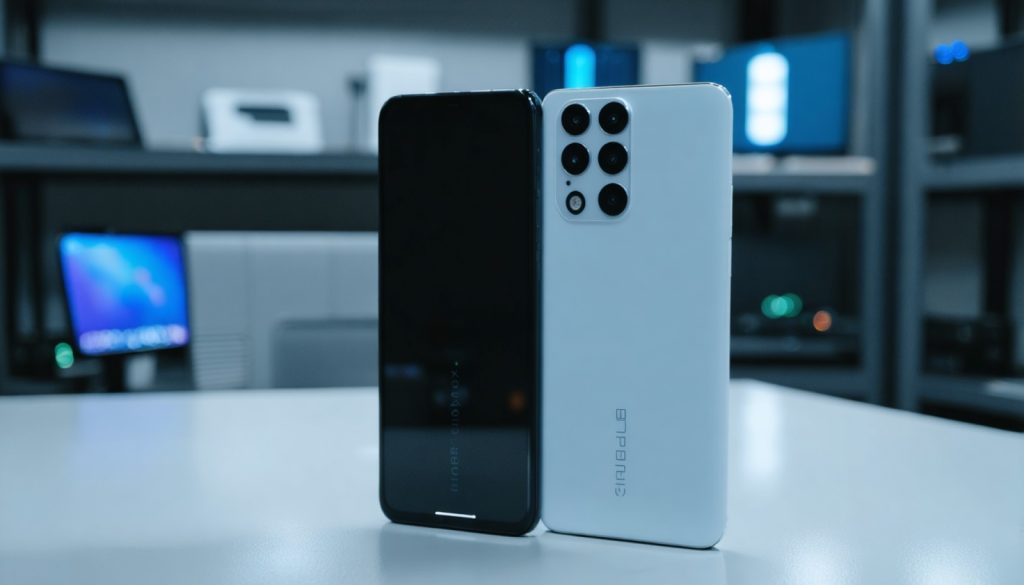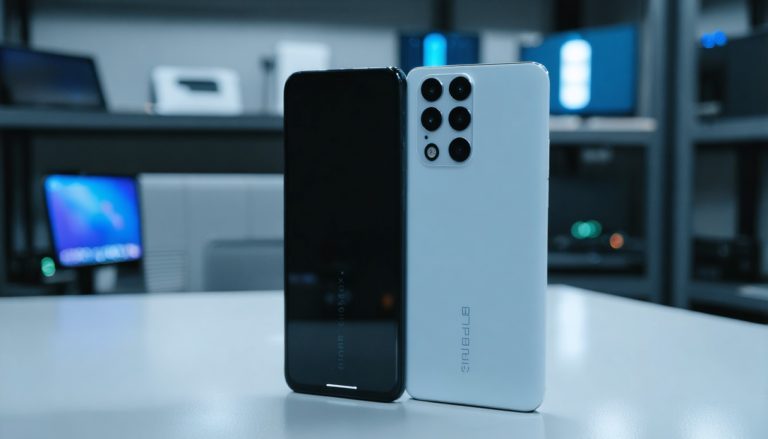
- GenAI smartphones and AI PCs are revolutionizing digital interactions, with a projected CAGR of 35.22% from 2024 to 2031.
- System-on-a-chip (SoC) architectures with neural processing units (NPUs) offer immense computational power, enabling devices to perform 30 trillion operations per second (TOPS).
- Devices are advancing in natural language processing and machine learning, allowing for creative functionalities such as art creation, photo editing, and language translation.
- Challenges include data privacy concerns, skill shortages, and the need for global market standardization.
- North America and Asia Pacific are poised for significant growth due to tech infrastructure and government incentives.
- Companies like Samsung, Apple, and Microsoft are actively investing in generative AI innovations, such as Microsoft’s ‘AI Explorer’ in Windows 11 and Apple’s integration plans.
- GenAI devices are transforming from technological curiosities into essential tools, enhancing human connectivity and capabilities.
Imagine a world where your smartphone not only understands your requests but anticipates them, where personal computers can create art, edit photos, and translate languages with a human touch. This is no longer a mere fantasy but a tangible reality fueled by the thrilling advancements in GenAI smartphones and AI PCs.
The soaring trajectory of these technologies promises a seismic shift in how we interact with our digital lives, forecasting an impressive compound annual growth rate (CAGR) of 35.22% from 2024 to 2031. At the heart of this technological renaissance is the innovative integration of system-on-a-chip (SoC) architectures graced by neural processing units (NPUs) that boast a staggering capability of thirty tera operations per second (TOPS). It’s as if each device is equipped with a brain that learns and grows with every interaction.
This transformative power comes not just from vacuuming data or crunching numbers, but from refining the algorithms that drive learning models and enhance natural language processing—a direct step toward machines that comprehend the world as we do. Imagine the convenience of seeing your smartphone adeptly streamline video edits or your PC partnering in crafting a masterpiece with its generative AI abilities.
However, as with all revolutions, challenges loom large. Data privacy is a formidable specter in this brave new world, with the potential to stymie the widespread adoption of AI technologies. The vast volumes of personal data processed by these devices prompt vital questions about how our digital footprints are safeguarded. Accompanying this are the hurdles of skill shortages in a rapidly evolving tech landscape and the need for standardized protocols to stabilize the markets in emerging economies still grappling with their foundations.
Despite these challenges, there’s no denying the palpable excitement and demand for these next-gen devices, particularly in regions like North America, where an avid tech consumer base and robust digital infrastructure create a fertile ground for growth. Meanwhile, Asia Pacific’s burgeoning tech scene, supported by strategic government incentives and expanding digital infrastructure, further sets the stage for a market explosion.
Tech giants like Samsung, Apple, and Microsoft are already deepening their stakes in this promising field. Microsoft’s upcoming ‘AI Explorer’ in Windows 11 speaks to a vision where daily user interactions become smarter and more intuitive. Meanwhile, Apple’s impending integration of generative AI into its devices marks an arms race toward crafting the ultimate intelligent device.
The stakes are high, and the journey is just beginning. As we stand on this threshold, one takeaway becomes clear: GenAI smartphones and AI PCs are not merely technological curiosities; they are the harbingers of a digital era that promises to redefine both our capabilities and connectivity. Devices will not just respond; they will think ahead. Are we ready to meet these intelligent companions halfway? In the evolving dance of man and machine, the next steps promise to be exceptional.
The Future of GenAI Devices: Are You Ready for the Next Digital Revolution?
Understanding the Landscape
In the rapidly transforming digital ecosystem, GenAI smartphones and AI PCs are spearheading a revolution. These cutting-edge devices are gradually changing our digital interactions by anticipating user needs and enabling more intuitive experiences. However, the scope and impact of this technology extend far beyond what many comprehend. Here’s everything you need to know about this burgeoning tech frontier, including actionable insights and future predictions.
Expanding Horizons: Real-World Applications and Use Cases
1. Content Creation Revolution:
– Graphic Design & Video Editing: With GenAI smartphones, users can leverage AI-powered apps capable of intricate tasks such as graphic design and video editing. Tools like Adobe’s AI frameworks can enhance photo edits in real time, allowing content creators to produce professional-grade material directly from their devices.
2. Personalized Learning Experiences:
– In educational settings, AI PCs equipped with advanced learning algorithms can custom-tailor study plans, quiz students, and even suggest additional resources based on a student’s pace and performance.
3. Healthcare Innovations:
– In the healthcare industry, AI PCs are poised to revolutionize patient data analysis, offering predictive analytics, personalized medicine, and even remote patient monitoring—potentially reducing costs and improving care quality.
The Market Forecast: Growth and Trends
– The anticipated CAGR of 35.22% from 2024 to 2031 sets the stage for monumental growth, especially in markets like North America, where consumer tech adoption is robust. Asia Pacific is not far behind, with aggressive tech policies bolstering their rapid market entry.
– Smart Home Integration: The integration of GenAI technology in smart home systems offers a seamless ecosystem where devices not only communicate but adapt to user preferences over time. As IoT expands, expect increased cross-device AI interfaces.
Key Players in the Game
– Samsung, Apple, and Microsoft are at the forefront, continually pushing boundaries with new innovations like Samsung’s AI-enhanced camera systems and Apple’s AI-driven health monitoring software.
– Emerging Contenders: Companies like Huawei and Xiaomi are also making strides in this domain, leveraging extensive R&D resources and an international user base to perfect their offerings.
Challenges on the Horizon
– Data Privacy Concerns: Protecting user data remains a significant concern. As devices process vast amounts of personal data, robust encryption and clear privacy policies will be essential to maintaining user trust.
– Skill Gaps: The rapid advancement of AI technology outpaces the current workforce’s skill set, necessitating new training programs for tech professionals and a push for STEM education in schools.
Actionable Recommendations
– Stay Informed: Keep abreast of the latest AI developments through industry news and forums. Consider resources such as TechCrunch and Engadget for technology updates.
– Experiment with AI Tools: Leverage AI-powered apps like Grammarly or Canva to streamline daily tasks and boost productivity.
– Data Protection Measures: Secure your devices with reliable anti-virus software and use VPN services to safeguard your personal information against potential breaches.
Conclusion: Embracing the New Era
The evolution of GenAI smartphones and AI PCs is a reality that promises to redefine personal and professional realms. As users, embracing this technology means not just adaptation but an active role in shaping how these advancements integrate into daily life. Prepare for a future where devices don’t just assist—they intelligently enhance every interaction.
Are you ready to step into this exciting digital era? The time to adapt and thrive is now.



